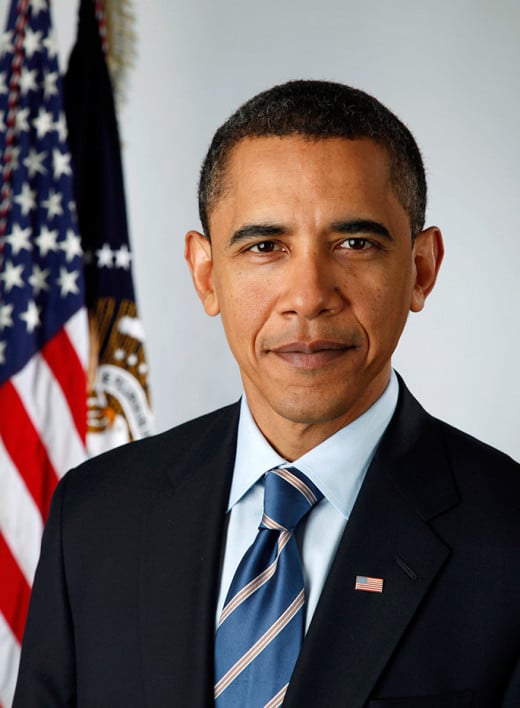- HubPages»
- Books, Literature, and Writing»
- Books & Novels»
- Nonfiction»
- Biographies & Memoirs
Obama's Divided Inheritance and Sense of Belonging in "Dreams from My Father"

About "Dreams from My Father"
"Dreams from My Father" is an autobiography written by Barack Obama before he became President of the United States. It tells of his early life, growing up in Hawaii with a white single mother and white grandparents. When he went to college, he found himself torn between his white heritage and his black heritage. He wanted to fit in with the black crowd, however he found that he was losing the values that his mother and grandparents had taught him. Finding a balance between his mixed racial background and trying to find a place where he fits in and belongs becomes a huge journey for him as he goes on to visit his birth father in Africa and become a politician in Chicago. It provides an interesting view on the current President's life because it was written before he was elected, therefore it is just a personal memoir and not a political writing.
Divided Inheritance and a Sense of Belonging
In Barack Obama’s autobiography, Dreams from My Father, he explores many ideas involving racial divides and finds meaning in life through the story of his past. A child of mixed race, he mostly grew up in Hawaii with his white mother and grandparents. However, when he attends high school and then college, he finds himself wanting desperately to fit in with the other black students. To him, the black students seem to have a sense of purpose and belonging in banding together against the racism they feel. However, since Obama is not fully black, he feels pressure and confusion in trying to figure out where he belongs in a country so divided by race. He even tries to hide behind a black identity, but he loses sight of his values along the way. While searching for some meaning, he begins to realize that race is more of an excuse that people use so that they won’t have to make an effort in getting to know people on an individual basis. Although he continues to struggle with this idea, it is a very important notion that he slowly develops through his teenage to young adult life that can free him from his self-imposed stereotypes and help him come to peace with himself.
While in middle and high school, Obama begins to form his ideas about race. He befriends one of the few black boys in a mainly white school, Ray, and he starts to feel the sting of racism. He receives discrimination from people who claim to mean well, but still see race as a dividing factor, such as his assistant basketball coach: “[He] had muttered within earshot of me and three of my teammates that we shouldn’t have lost to a bunch of niggers; and … had calmly explained the apparently obvious fact that ‘there are black people, and there are niggers’” (80). The coach tries to play off his racism as being only directed at a select few, however when he calls out a race, he wrongly indicates all people in that race. This is the first example of mistakenly assigning traits of certain individuals to a whole group of people. Whether it is intentional or unintentional, it is still damaging to the reputation of the whole group. Obama makes a similar mistake when he and Ray complain to each other about white people: “White folks. The term itself was uncomfortable in my mouth at first; I felt like a non-native speaker tripping over a difficult phrase… The term white was simply a shorthand [used by Ray], I decided, a tag for what my mother would call a bigot” (80-81). This is Obama’s first true realization that since he is of mixed race, both labels of “white” and “black” are hurtful to him since he can identify as both. His mother, who is white, is not a bigot, and his father, who is black, is not a bad person. He has enough first hand experience with both races to know that a careless label of skin color is not an accurate description of personality.
Obama struggles with his new realization, going back and forth between being angry at the injustices served to blacks by whites and remembering that he is half white himself. He begins to read famous black authors to find out how they dealt with racial issues: “I would sit and wrestle with words, locked in suddenly desperate argument, trying to reconcile the world as I’d found it with the terms of my birth” (85). He tries harder and harder to identify with blacks and ignore his white heritage. He even becomes jealous of his friend Regina, who grew up in a black neighborhood with a black family, when she tells him of her childhood and the hardships she faced. He seems to wish that he had similar hardships just so that he could have a more definite identity: “Her voice evoked a vision of black life in all its possibility, a vision that filled me with longing – a longing for place, and a fixed and definite history” (104). He romanticizes the hardships that his black friends have faced. However, Regina admits to envying Obama’s childhood, since he grew up in Hawaii with a white family and with less suffering than her more common experience in a poor inner city. Both of them think that the grass is greener on the other side, rather than just embracing their pasts and moving forward.
After becoming entrenched in the black culture at his college in an effort to fit in, Obama finally realizes that he is not being true to himself. He sees that he has lost grip of his core values just to try to prove himself worthy: “So wrapped up I had been in my own perceived injuries, so eager was I to escape the imagined traps that white authority had set for me. To that white world, I had been willing to cede the values of my childhood, as if those values were somehow irreversibly soiled by the endless falsehoods that white spoke about black” (110). Luckily, his friends could see that although he meant well, his morals were slipping. They even called him out for it: “Now I was hearing the same thing from black people, people with more excuses for bitterness than I might ever claim for myself. Who told you that being honest was a white thing? Who sold you this bill of goods, that your situation exempted you from being thoughtful or diligent or kind, or that morality had a color?” (110). This is just what Obama needed to hear, so that he could get back on track and realign with his true self. Although he feared being stuck in a limbo between black and white, he saw that he needed to change: “The constant, crippling fear that I didn’t belong somehow, that unless I dodged and hid and pretended to be something I wasn’t I would forever remain an outsider, with the rest of the world, black and white, always standing in judgment” (111). Coming to terms with the fact that his fear of not belonging was only inhibiting his process of finding a place in the world was the first step to becoming a better man.
Realizing he had allowed himself to become narrow-minded is a turning point for Obama. By seeing the world only in black and white, and trying to exist on only one side, he was limiting himself: “Only a lack of imagination, a failure of nerve, had made me think that I had to choose between [race]” (111). He decides to attempt to overcome his fear of not belonging and his attempts at identifying as one specific race. Making one of the most important statements in the book, he says, “My identity might begin with the fact of my race, but it didn’t, couldn’t, end there” (111). Rather than trying to continue seeing issues as matters of race, he opens his mind so that he can see past arbitrary factors such as skin color, and look at a person as an individual.
Although Obama goes through this important change, he is still a young adult and he still falls back on his old beliefs from time to time. After reflecting on his relationship with his mother, he comments, “The emotions between the races could never be pure; even love was tarnished by the desire to find in the other some element that was missing in ourselves. Whether we sought out our demons or salvation, the other race would always remain just that: menacing, alien, apart” (124). I would argue that he is still mistaking race for just people of another background. Not everyone from one race has the same or even similar lives. In the quote, the word race could simply be replaced with “people” and still be true. He is judging his mother by saying that she cannot love him fully because she has not experienced the same uncertainty and discrimination as he has. There may be an extra component of distance between races, but you have to be vulnerable and allow people to try and understand for any kind of love to work.
Since Obama is still a young adult searching for a sense of belonging, he still struggles with the distinction between race and individuals at times. However, his thinking is getting more sophisticated and he is able to snap out of his old habits of trying to put both races in a simple box and choose between one or the other. This is imperative as he grows older and wiser, as it becomes clear that a sense of belonging comes from so much more than being surrounded by people who simply look like you. Being able to break out of such narrow-minded views is the only way to come to peace with yourself. Furthermore, it is what can separate people who go on to change history from those who simply fume about it and fuel the flame of hatred between groups.
Works Cited
Obama, Barack. Dreams from My Father. New York: Three Rivers, 2004. Print.
Related Essays
- Imagery in Martin Luther King Jr.'s "I Have a Dream"
An analysis of the imagery used in Dr. Martin Luther King Jr.'s most famous speech, "I Have a Dream" and why it was so effective. - Martin Luther King Jr., A Peaceful, Revolutionary Leader
An analysis of Martin Luther King Jr.'s revolutionary, peaceful philosophies and nonviolent tactics, specifically from his "Letter from a Birmingham Jail". - "Theme for English B" by Langston Hughes Analysis
My brief analysis and personal reaction to Langston Hughes' "Theme for English B". The focus includes diversity, perspective, and truth. - Analysis of W.E.B. Du Bois' "Double Consciousness and the Veil"
An analysis of the struggle for equality and inner turmoil among African Americans as described by W.E.B. Du Bois in The Souls of Black Folk: Double Consciousness and the Veil. - Slave Women Suffered More
An analysis of Harriet Jacobs' "Incidents in the Life of a Slave Girl" and William Faulkner's "The Bear" in his collection of stories, "Go Down, Moses". I have explored their similar views on the treatment of slavewomen and the assertion that slave









